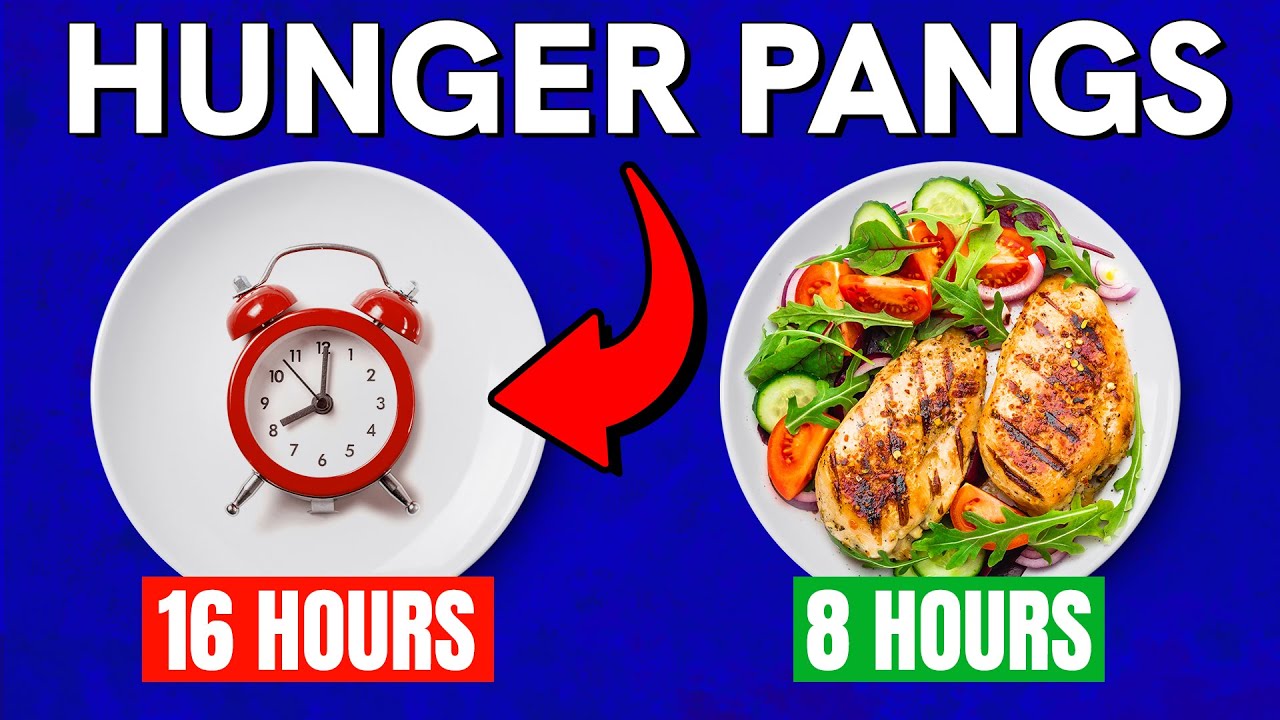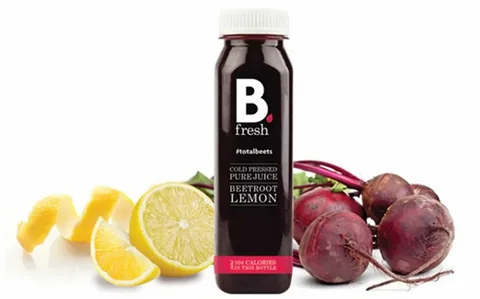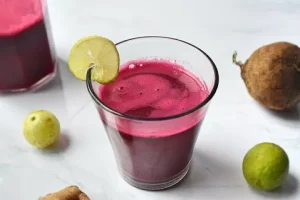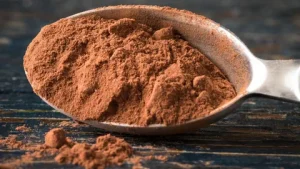Food Drink
Ending Hunger Pangs with the Always Hungry Solution

Introduction
Feeling hungry all the time makes weight loss a constant battle. The Always Hungry Solution promises a way to curb those hunger pangs without starving yourself. By using smart meal timing, balanced nutrients, and easy lifestyle changes, you can manage your weight while still feeling satisfied. In this article, we’ll unveil the core ideas behind this plan, explore its scientific basis, and share actionable tips. You’ll learn how to eat in a way that keeps hunger at bay and moves you toward your goals—no extra snacks required.
Understanding Hunger Pangs
Before diving into the solution, it helps to know why we get hungry so often:
- Blood Sugar Swings: After a high‑carb snack or meal, blood sugar can spike and then crash. This crash triggers hunger signals.
- Hormonal Signals: Ghrelin, the “hunger hormone,” rises before meals and falls after eating. Imbalances can keep it high.
- Empty Stomach: Physical cues from an empty stomach send signals to the brain that it’s time to eat.
- Emotional Eating: Stress, boredom, or habit can trigger cravings even when the body does not need fuel.
The Always Hungry Solution addresses these triggers by balancing blood sugar, managing hunger hormones, and creating healthier eating habits.
What Is the Always Hungry Solution?
Developed by nutrition and medical experts, the Always Hungry Solution is a step‑by‑step plan that focuses on:
- Customized Meal Timing: Eating at specific intervals to keep blood sugar steady.
- Macronutrient Balance: Combining proteins, fats, and carbs in each meal to promote fullness.
- Smart Food Choices: Emphasizing whole foods that digest slowly and release energy over time.
- Lifestyle Strategies: Simple tweaks like mindful eating and stress management to reduce emotional hunger.
Unlike crash diets, this approach teaches how to eat for life. You learn to recognize real hunger, plan meals that satisfy, and avoid the roller‑coaster of cravings.
Scientific Basis of the Plan
Balancing Blood Sugar
Eating protein and healthy fats alongside carbs slows digestion. This produces a gentler rise and fall in blood sugar, cutting down on mid‑meal hunger. Studies show that balanced meals can reduce cravings by up to 50%.
Regulating Ghrelin and Leptin
- Ghrelin signals hunger; leptin signals fullness.
- Diets high in refined sugar and processed foods can disrupt these hormones.
- The solution’s focus on whole foods helps restore normal hormone cycles, so you feel full longer.
Thermic Effect of Food
Proteins have a higher “thermic effect”—your body uses more energy to digest them. By including quality protein in each meal, you slightly boost calorie burn and maintain a sense of fullness.
Core Components of the Always Hungry Solution

Image by: Yandex.com
1. Meal Timing Blocks
The plan divides the day into 6‑8‑hour blocks. Each block has a main meal and a snack or small meal. For example:
| Block | Timing | Meal Example |
|---|---|---|
| Morning | 7 AM–1 PM | Greek yogurt bowl with berries |
| Afternoon | 1 PM–7 PM | Grilled chicken salad + fruit |
| Evening | 7 PM–1 AM | Baked salmon with veggies + nuts |
Spacing meals this way helps balance energy and avoid long fasting periods that spike ghrelin.
2. Macronutrient Pairing
Each meal or snack should include:
- Protein: Eggs, fish, beans, or lean meats.
- Healthy Fats: Avocado, olive oil, nuts, or seeds.
- Complex Carbs: Whole grains, vegetables, or legumes.
This trio slows digestion, keeps blood sugar even, and gives lasting energy.
3. Whole‑Food Focus
Processed foods often lack fiber and nutrients. They digest quickly and lead to crashes. The Always Hungry Solution emphasizes:
- Vegetables & Fruits: High in fiber and water for fullness.
- Ancient Grains & Legumes: Provide sustained energy.
- Lean Proteins & Plant Fats: Support muscle and hormone balance.
Sample Daily Menu
Below is a sample menu showing how to follow the plan in a real day:
- 7 AM (Breakfast): Oatmeal with chia seeds, almond butter, and half a banana
- 10 AM (Snack): Cottage cheese with sliced peaches
- 1 PM (Lunch): Quinoa salad with chickpeas, mixed greens, feta, and olive oil
- 4 PM (Snack): Apple slices with light peanut butter
- 7 PM (Dinner): Grilled turkey burger on a whole‑grain bun with avocado and side salad
- 9 PM (Optional Snack): A handful of almonds or a small Greek yogurt
This menu blends protein, fats, and carbs at every eating window. Hunger should stay moderate rather than overwhelming.
Lifestyle Strategies to Curb Hunger
Mindful Eating
- Slow Down: Chew well and pause between bites.
- Listen to Cues: Eat when truly hungry; stop when 80% full.
- Eliminate Distractions: Avoid screens to focus on food and fullness signals.
Stress Management
Cortisol, the stress hormone, can trigger cravings for sugary or fatty foods. Try:
- Deep Breathing: Five minutes of focused breathing can calm cortisol.
- Short Walks: A quick stroll clears the mind and reduces stress.
- Relaxation Techniques: Gentle yoga or meditation sessions help reset hunger signals.
Hydration
Sometimes thirst feels like hunger. Aim for at least 8 cups of water daily. Herbal teas can also count toward fluid goals and provide a soothing pause between meals.
Benefits of the Always Hungry Solution
- Reduced Cravings: Stabilized blood sugar cuts sudden urges.
- Steady Energy: Balanced meals prevent afternoon slumps.
- Sustainable Weight Loss: No extreme restrictions mean easier long‑term adherence.
- Improved Mood: Less mood swing from sugar crashes.
- Better Sleep: Calmer eating patterns support restful nights.
Users often report losing an average of 1–2 pounds per week without feeling deprived.
Potential Drawbacks and How to Overcome Them
- Initial Planning: Some people find meal timing and prep more work up front.
- Solution: Batch‑cook grains and proteins on weekends.
- Hunger Between Meals: Early days may still bring pangs as hormones adjust.
- Solution: Include a small protein‑rich snack or a cup of herbal tea.
- Social Challenges: Dining out can disrupt timing blocks.
- Solution: Choose restaurants with protein, veggie, and healthy‑fat options; ask for a to‑go box to split your meal.
Real‑World Success Stories
- Sarah, 34: Lost 20 lbs in 3 months by following the meal blocks and swapping soda for water.
- Carlos, 45: Cut his daily snack runs after adding protein‑rich breakfasts. He dropped 15 lbs in 2 months.
- Mia, 27: Reduced stress eating by practicing mindful bites and deep‑breathing before meals.
These stories show how simple changes can yield big results when hunger is managed correctly.
Tips for Long‑Term Success
- Track Your Progress: Note hunger levels, weight changes, and mood daily.
- Adjust as Needed: Tweak meal sizes or timing based on personal hunger cues.
- Stay Flexible: Life events will occasionally disrupt the plan—bounce back quickly.
- Seek Support: Join online groups or find a buddy for accountability.
Consistency, not perfection, drives lasting weight management.
Conclusion
The Always Hungry Solution offers a practical way to end constant hunger pangs and support healthy weight management. By combining balanced macronutrients, strategic meal timing, and simple lifestyle shifts—like mindful eating and stress control—you can keep blood sugar steady and cravings in check. Users report steady weight loss and improved energy without feeling deprived. While initial meal prep and timing may require effort, the long‑term benefits make it worthwhile. Embrace this approach, adapt it to your schedule, and watch hunger fade as you move steadily toward your health goals.
Beauty Fitness
Ultimate Guide to Buying Quality Beet Juice for Optimal Health

Are you wondering where to buy beet juice that’s both high-quality and effective? You’re not alone. As more people discover the incredible health advantages of this ruby-red superfood, the demand for premium beetroot products continues to surge.
However, navigating the crowded marketplace can feel overwhelming. This detailed guide will walk you through everything you need to know about purchasing the best beet juice for your wellness journey.

Understanding the Beet Juice Phenomenon
Before exploring purchase options, it’s essential to grasp why beet juice has become a staple in health-conscious households worldwide. This nutrient-dense beverage contains an impressive array of vitamins, minerals, and potent antioxidants that support overall wellness. The real game-changer, however, is its exceptional concentration of dietary nitrates.
Your body transforms these nitrates into nitric oxide, a molecule that influences numerous physiological processes. From enhancing blood circulation to optimizing oxygen transport throughout your system, nitric oxide serves critical functions. Many individuals exploring natural wellness solutions have discovered the important relationship between nitric oxide and erection health, as enhanced circulation provides benefits that extend far beyond exercise performance.
Your Best Options for Purchasing Beet Juice
1. Dedicated Online Health Retailers (Top Choice)
Purchasing from specialized online platforms represents the most practical approach to securing premium beetroot juice. These digital marketplaces focus exclusively on wellness products and typically provide:
- Reliable standards: Established online retailers enforce rigorous quality protocols
- Extensive selection: Various formats from concentrate shots to full-size bottles
- Comprehensive details: Full nutritional profiles and usage guidelines
- Authentic feedback: Genuine testimonials from verified purchasers
- Hassle-free shipping: Products arrive at your home
- Competitive costs: Generally more affordable than brick-and-mortar locations
When browsing online, seek out companies that openly share information about their ingredient sourcing, production techniques, and nitrate concentrations. Top-tier brands frequently use organically-grown beets and utilize cold-extraction methods to maintain nutritional integrity.
2. Natural Food Retailers
Specialty health stores and organic markets commonly carry beetroot juice options. Benefits include:
- Physical product inspection before purchase
- Same-day availability
- Contributing to community businesses
- Access to informed employees who can provide guidance
The downside is that inventory might be restricted, and costs often exceed online alternatives.
3. Conventional Supermarkets
Mainstream grocery stores increasingly feature beet juice in their wellness or beverage aisles. While accessible, these options may:
- Include unnecessary sweeteners or additives
- Be watered down with filler juices
- Offer reduced nitrate levels
- Lack the specialization of dedicated brands
4. Fresh Market Vendors and Juice Establishments
Local farmers markets and pressed juice cafes offer freshly-made alternatives. Consider that:
- Quality fluctuates considerably
- Uniformity cannot be guaranteed
- Products expire more quickly
- Premium pricing is standard
Essential Factors When Selecting Beet Juice
Quality Markers
Certified Organic: Guarantees beets are cultivated without chemical pesticides or artificial fertilizers, particularly important since root vegetables can concentrate soil impurities.
Nitrate Concentration: Premium beet juice products should transparently display nitrate levels. Target products offering a minimum of 400mg nitrates per portion for meaningful results.
Component Listing: Simplicity is key. Authentic beet juice should contain very few ingredients—ideally just organic beets and possibly lemon juice for freshness.
Extraction Technique: Cold-extraction or fresh-pressed approaches retain superior nutrients versus heat-based processing.
Zero Added Sweeteners: Natural beet sweetness is sufficient, and supplemental sugars diminish health advantages.
Available Formats
Concentrated Portions: Perfect for athletes and individuals wanting maximum nitrate delivery in compact servings. Typically 70-100ml doses.
Standard Bottles: Practical for everyday use, usually available in 250-500ml sizes.
Dehydrated Powder: Extended storage capability and travel-friendly, though absorption may be marginally lower than liquid forms.
Combination Beverages: Merged with additional vegetables or fruits, which can enhance flavor but potentially reduce beet concentration.
The Research Supporting Beet Juice Advantages
Recognizing the benefits clarifies why quality selection matters. Beet juice ranks among the most concentrated dietary sources in foods high in nitric oxide precursors. When consuming dietary nitrates from beets, your system converts them through a biological pathway involving oral bacteria and gastric processes.
Primary Health Advantages
Heart Health Enhancement: Nitric oxide assists in relaxing and widening blood vessels, supporting optimal blood pressure and circulation patterns.
Exercise Optimization: Research demonstrates beet juice can boost stamina, decrease oxygen requirements during activity, and elevate athletic output.
Brain Function Support: Enhanced blood delivery to the brain potentially supports mental sharpness and cognitive capabilities.
Sustained Vitality: Unlike stimulant-based energy drinks, beet juice delivers lasting energy through optimized oxygen distribution.
Cleansing Properties: Betalain compounds in beets assist liver operations and natural purification mechanisms.
Recommended Beet Juice Quantities
Appropriate amounts vary based on objectives:
- Everyday wellness: 250ml (roughly 8 oz) per day
- Athletic enhancement: 500ml, consumed 2-3 hours pre-workout
- Cardiovascular maintenance: 250-500ml daily with consistency
Begin with modest quantities if you’re new to beet consumption, as some individuals experience digestive adaptation or temporary color changes in bodily waste (completely normal and harmless).
Optimal Timing for Beet Juice Consumption
Athletic Goals: 2-3 hours prior to training permits ideal nitrate transformation and uptake.
General Wellness: Morning intake on an empty stomach or between meals enhances absorption efficiency.
Blood Pressure Management: Consistent daily scheduling helps sustain steady benefits.
Investment Considerations
While cost shouldn’t dictate your decision entirely, understanding value is important:
- High-grade concentrated shots: $3-5 each serving
- Standard bottles: $2-4 per serving
- Volume purchases: Frequently 20-30% reduced pricing
- Recurring delivery: Extra 10-15% price reductions
Premium beet juice constitutes a wellness investment. When evaluating prices, assess the nitrate content per dollar rather than simply volume measurements.
Preservation and Longevity
Sealed Products: Most commercial varieties remain fresh for 12-18 months when kept in cool, dark environments.
After Opening: Refrigerate and finish within 7-10 days for peak freshness and nutrient preservation.
Freshly Pressed: Consume within 2-3 days for optimal quality.
Finalizing Your Purchase Strategy
When determining where to buy beet juice, evaluate:
- Accessibility: How vital is home delivery compared to instant availability?
- Quality standards: Do you need organic validation or particular nitrate thresholds?
- Financial parameters: What’s your comfortable price range for ongoing use?
- Purpose: Are you using it for athletic training, everyday health, or targeted wellness objectives?
- Flavor preferences: Do you want pure beet or mixed varieties?
Warning Signs to Watch For
Overloaded Formulas: Extended ingredient panels featuring preservatives, synthetic flavoring, or sweetening agents.
Unclear Origins: Missing details about beet cultivation location or juice production methods.
Hidden Nitrate Data: Reputable companies should openly communicate nitrate measurements.
Exaggerated Marketing: Watch for inflated health declarations lacking scientific support.
Suspiciously Cheap Pricing: When costs seem unrealistically low, quality is often sacrificed.
Final Recommendation: Your Best Purchasing Approach
For the majority of consumers, buying from a specialized digital retailer delivers the optimal balance of quality, convenience, and affordability. You’ll discover products engineered specifically for maximum wellness impact, featuring transparent details about ingredient origins and nutritional composition.
Prioritize companies that:
- Source organic, non-GMO beets
- Display clear nitrate concentration data
- Use cold-extraction or gentle processing techniques
- Supply customer assistance and educational materials
- Maintain favorable customer testimonials and ratings
- Present flexible buying arrangements including auto-delivery
Final Thoughts
Discovering where to buy beet juice becomes straightforward when you emphasize quality, recognize key purchasing criteria, and select trustworthy suppliers.
You can confidently add this remarkable superfood to your wellness routine. Whether you’re an athlete pursuing performance improvements, someone focused on heart health, or simply aiming to enhance overall vitality, quality beet juice offers valuable nutritional support.
Keep in mind that regularity trumps perfection. Begin with a credible source, observe your body’s response, and modify your consumption accordingly. The advantages of beet juice manifest most effectively through consistent, ongoing use of superior products.
Prepared to embrace the benefits of exceptional beet juice? Choose intelligently, and your body will reward you with improved health and vitality.
Consumer Services
Cocoa Powder: The Premium Choice for Baking and Confectionery

Cocoa powder holds a cherished spot in the world of baking and confectionery, renowned for its rich, decadent flavor and remarkable versatility. Among the array of brands available, Mauri Cocoa Powder has surfaced as a favorite due to its deep color, intense taste, and high-quality ingredients.
This article explores the essence of Mauri Cocoa Powder, delving into its origins, properties, benefits, uses, and tips for making the most of this delightful ingredient.

What is Mauri Dark Brown Cocoa Powder?
Mauri Dark Brown Cocoa Powder is a premium cocoa product, artfully processed from top-quality cocoa beans. It is recognized for its rich brown hue and robust flavor, making it the perfect choice for various culinary applications.
Key Features:
- Deep Color: The dark brown color indicates a high cocoa content, which enhances the chocolate experience.
- Intense Flavor: It provides a rich chocolate taste that elevates baked goods and confections.
- Smooth Texture: The finely processed powder ensures even mixing in recipes.
- Low Fat Content: This emphasizes the pure cocoa flavor without unnecessary additives.
- Dutch-Processed: The alkalization process enhances solubility and enriches the flavor profile.
Origins and Manufacturing of Mauri Cocoa
Mauri as a Brand
Mauri has established itself as a purveyor of high-quality baking ingredients known globally. The brand is lauded for its commitment to reliable, consistent products that cater to both home bakers and professional chefs.
Cocoa Bean Sources
Mauri sources its cocoa beans from the heart of cocoa-producing regions, including West Africa, South America, and Southeast Asia. Adhering to sustainable and ethical sourcing practices, Mauri ensures that fair trade principles are upheld while minimizing environmental impact.
Processing Techniques
The cocoa beans undergo a meticulous manufacturing process:
- Dutch-Process Alkalization: This treatment neutralizes the natural acidity of cocoa beans, resulting in a smoother taste.
- Refinement: The beans are roasted, winnowed, and ground into a fine powder, ready for packaging.
Advantages of Using Mauri Dark Brown Cocoa Powder
This cocoa powder offers multiple culinary and nutritional benefits:
Culinary Benefits
- Rich Chocolate Flavor: It enhances the taste of baked goods, ensuring a chocolatey delight in every bite.
- Moisture and Structure: Mauri Cocoa Powder contributes to the texture of cakes, cookies, and brownies, providing essential moisture.
- Visual Appeal: Its dark color adds an alluring touch to your recipes.
Nutritional and Health Aspects
Mauri Cocoa Powder is not just about taste; it also packs a nutritional punch:
- Antioxidants: Rich in flavonoids, it offers health benefits that can enhance overall well-being.
- Mineral Content: It contains essential minerals like magnesium, iron, and zinc.
- Low in Fat: Comparatively lower fat content makes it a smart choice for health-conscious bakers.
Versatility in the Kitchen
The uses of Mauri Cocoa Powder are boundless, covering various culinary realms, including baking, beverages, and even savory dishes.
Common Uses of Mauri Dark Brown Cocoa Powder
Baking:
- Cakes: Perfect for chocolate cakes and devil’s food varieties.
- Brownies: Ideal for rich, fudgy brownies that melt in your mouth.
- Cookies: Adds depth to classic cookies and biscuits.
- Muffins and Cupcakes: Enhances the sweetness and chocolate flavor in baked treats.
Beverages:
- Hot Chocolate: A deliciously creamy beverage for cold days.
- Chocolate Milkshakes: Perfect for a refreshing treat.
- Mocha Drinks: Combines beautifully with coffee for a rich experience.
Other Culinary Applications:
- Chocolate Frosting: Elevate your cakes with homemade chocolate frosting.
- Nutritional Smoothies: Blend into smoothies for added flavor and nutrition.
- Chocolate Sauces and Syrups: Create decadent sauces to complement desserts.
- Flavor Enhancer: Use in yogurt, ice cream, and other desserts for added richness.
Advice for Cooking and Baking with Mauri Dark Brown Cocoa Powder
Maximizing the benefits of Mauri Cocoa Powder is easy with these tips:
- Storage: Keep it in a cool, dry place out of direct sunlight to retain freshness.
- Measurement: Use accurately as dictated by your recipe, generally around 1-2 tablespoons per serving.
- Mixing: Sift the cocoa powder before use to eliminate clumps and achieve an even distribution.
- Complementary Ingredients: Pair with flavors like vanilla, cinnamon, or coffee to elevate your recipes.
- Balancing Bitterness: Adjust sugar levels in your recipes to counterbalance the cocoa’s intensity.
Choosing Quality Mauri Dark Brown Cocoa Powder
When selecting Mauri Cocoa Powder, consider these factors:
- Brand Reputation: Trustworthy brands like Mauri are more likely to deliver consistent quality.
- Packaging: Opt for vacuum-sealed or airtight containers for better freshness.
- Labeling: Look for certifications such as Fair Trade or Organic if preferred.
- Appearance and Scent: Dark, fragrant cocoa that is free of clumps indicates quality.
Recipes Featuring Mauri Dark Brown Cocoa Powder
Classic Chocolate Brownies
Ingredients:
- 1 cup Mauri Dark Brown Cocoa Powder
- 1 cup all-purpose flour
- 1/2 cup butter
- 2 cups sugar
- 3 eggs
- 1 teaspoon vanilla extract
Instructions:
- Preheat your oven to 180°C (356°F) and grease a baking pan.
- Melt the butter and combine it with the sugar in a mixing bowl.
- Incorporate the eggs and vanilla, blending until thoroughly mixed.
- Sift the cocoa powder and flour, then fold gently to mix.
- Transfer the batter into the prepared pan and bake for 25-30 minutes or until a toothpick inserted comes out clean
Rich Hot Chocolate
Ingredients:
- 2 tablespoons Mauri Dark Brown Cocoa Powder
- 2 cups milk
- 2 tablespoons sugar
- Whipped cream or marshmallows (optional)
Instructions:
- In a small bowl, whisk the cocoa powder and sugar into a small amount of hot milk until well mixed.
- In a saucepan, heat the remaining milk until steaming.
- Whisk the cocoa mixture into the hot milk until smooth.
-
Serve warm, garnished with whipped cream or marshmallows if preferred
Final Thoughts on Mauri Cocoa Powder
Mauri Dark Brown Cocoa Powder stands out as a premium ingredient, delivering intense chocolate flavor and versatility across various culinary applications. With its balanced profile of taste and health benefits, it has become a staple in both home kitchens and professional baking environments.
By following tips for storage and usage, you can unlock the full potential of this incredible cocoa powder in your favorite recipes, from decadent brownies to luxurious hot chocolate.
Food Drink
Vezlay Foods: Revolutionizing the Vegan Food Scene in India

WE The plant-based food revolution is here, and Vezlay Foods is leading the charge in India with its innovative range of Vegan Food.
As more people embrace healthier, sustainable eating habits, the demand for delicious vegan alternatives has skyrocketed. Vezlay Foods has answered this call with a diverse portfolio of plant-based options that don’t compromise on taste or nutrition.

Popular Vegan Products from Vezlay
Veg Chicken: A Game-Changer
One of the brand’s most loved products is their Veg Chicken. It has become well-known among vegetarians and vegans.
This new product has the same juicy texture and satisfying bite as chicken. However, they make it only from plant-based ingredients. Whether you’re making butter masala, tikka, biryani, or stir-fry, Veg Chicken adapts beautifully to any recipe.
The beauty of Veg Chicken lies in its versatility. You can marinate it overnight for tandoori dishes, dice it for curries, or shred it for wraps and sandwiches.
It absorbs marinades exceptionally well, which ensures that every bite packs in flavor. Many customers say that even meat-eaters in their families can’t tell the difference when they eat Veg Chicken dishes!
Soya Chaap: The Traditional Favorite
Another star in Vezlay’s lineup is their Soya Chaap. Chefs have improved this traditional Indian dish to suit modern tastes. Soya Chaap has long been a popular street food and restaurant dish, and Vezlay has brought this experience to your home kitchen.
Rich in protein and low in fat, it’s an excellent choice for fitness enthusiasts and health-conscious families.
Soya Chaap is very versatile. You can grill it with tandoori spices.
We can simmer it in creamy gravies. You can toss it in dry masalas. We can also use it in wraps and rolls.
The texture is remarkably meat-like, with a fibrous quality that makes it satisfying to chew. It’s perfect for those who miss the texture of meat but want to stay committed to a plant-based lifestyle.
Other Exciting Products
Vezlay Foods doesn’t stop at just Veg Chicken and Soya Chaap. Their product range includes various other veg meat alternatives like veg mutton, veg fish, and ready-to-cook nuggets.
Each team member makes each product with care to offer a special culinary experience. It also meets the high nutritional standards that Vezlay upholds.
What Makes Vezlay Foods Stand Out?
Vezlay Foods has found a special place in the Indian market. They make Veg Meat products that taste and feel like real meat dishes. If you are moving to a plant-based diet or want to eat less meat, these products are a great choice.
The company knows that Indians enjoy rich, tasty food. They have captured that essence in every vegan product they make.
Popular Vegan Products from Vezlay
One of the brand’s most loved products is their Veg Chicken. It has become a well-known name for vegetarians and vegans.
This new product has the same juicy texture and satisfying bite as chicken. However, they make it only from plant-based ingredients. Whether you’re making curry, tikka, or stir-fry, Veg Chicken adapts beautifully to any recipe.
Another star in Vezlay’s lineup is their Soya Chaap. Chefs have improved this traditional Indian dish to suit modern tastes. Soya Chaap is incredibly versatile – you can grill it, curry it, or use it in wraps and rolls. Rich in protein and low in fat, it’s an excellent choice for fitness enthusiasts and health-conscious families.
The Health Benefits of Going Vegan
Choosing vegan food isn’t just a dietary preference; it’s a lifestyle choice that offers numerous health benefits. Vezlay packs its products with plant-based protein.
This makes them great for building muscle and keeping energy up all day. They have no cholesterol, less saturated fat, and are easier to digest than animal-based products.
For those concerned about getting enough protein, Vezlay Foods has you covered. Their products mainly use soy and other plant sources that are high in protein.
This way, you get all the nutrition you need without any animal products.
Sustainability and Ethics
Beyond personal health, choosing Vezlay’s vegan products means you’re making an environmentally conscious decision. Plant-based foods require significantly less water, land, and energy to produce compared to traditional meat.
By adding more plant-based meat to your diet, you lower your carbon footprint. This helps create a more sustainable future.
Easy to Cook, Delicious to Eat
One of the biggest advantages of Vezlay products is their convenience. Whether you’re a seasoned cook or a kitchen novice, these vegan products are incredibly easy to prepare.
They absorb flavors beautifully, making them perfect for Indian spices and cooking styles. From quick weeknight dinners to elaborate weekend feasts, Vezlay Foods fits seamlessly into your cooking routine.
The Future of Food is Plant-Based
As awareness about health and sustainability grows, more families are exploring plant-based alternatives. Vezlay Foods makes this transition smooth and enjoyable.
Their commitment to quality, taste, and nutrition has made them a trusted name in the Vegan Product industry.
Vezlay Foods has options for everyone. If you are a vegan, a vegetarian, or just want to eat healthier, you will find something you like.
Their range of products proves that you don’t have to sacrifice flavor for health or ethics. With choices like Veg Chicken and Soya Chaap, every meal helps you nourish your body and care for the planet.
Conclusion
Vezlay Foods has successfully bridged the gap between traditional Indian cuisine and modern dietary preferences. Their innovative approach to creating delicious, nutritious vegan food has made plant-based eating accessible and appealing to millions.
As more people want healthy and sustainable food, Vezlay Foods is ready to help. Their products are good for you, animals, and the planet.
Make the switch today and discover how delicious vegan living can be with Vezlay Foods!
-
Business2 years ago
Cybersecurity Consulting Company SequelNet Provides Critical IT Support Services to Medical Billing Firm, Medical Optimum
-
Business2 years ago
Team Communication Software Transforms Operations at Finance Innovate
-
Business3 years ago
Project Management Tool Transforms Long Island Business
-
Business2 years ago
How Alleviate Poverty Utilized IPPBX’s All-in-One Solution to Transform Lives in New York City
-
health3 years ago
Breast Cancer: The Imperative Role of Mammograms in Screening and Early Detection
-
Sports3 years ago
Unstoppable Collaboration: D.C.’s Citi Open and Silicon Valley Classic Unite to Propel Women’s Tennis to New Heights
-
Art /Entertainment3 years ago
Embracing Renewal: Sizdabedar Celebrations Unite Iranians in New York’s Eisenhower Park
-
Finance3 years ago
The Benefits of Starting a Side Hustle for Financial Freedom

































